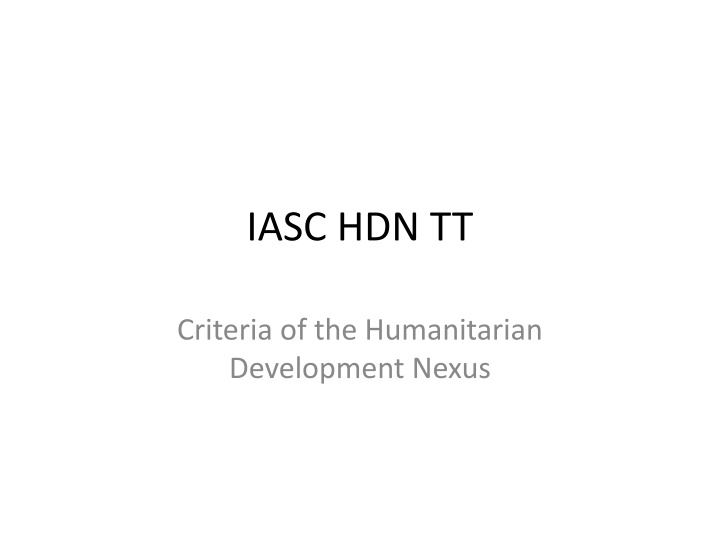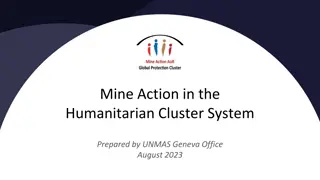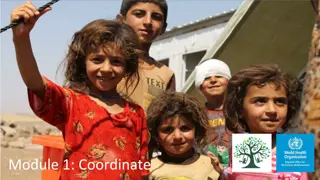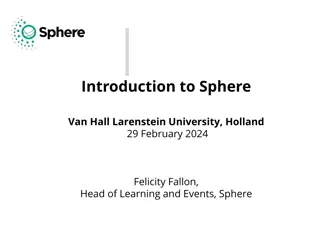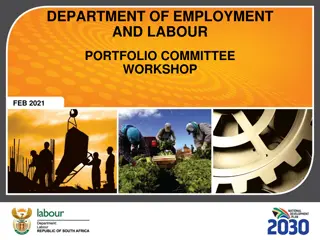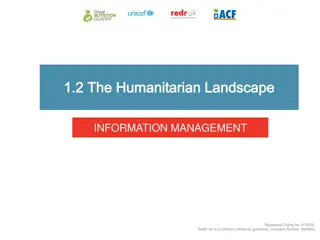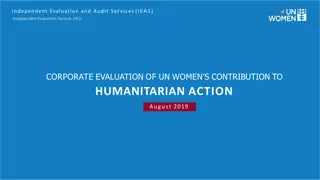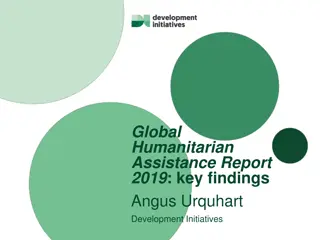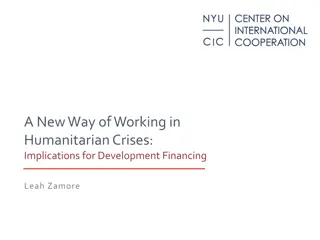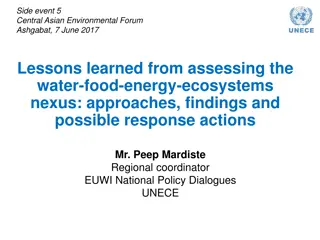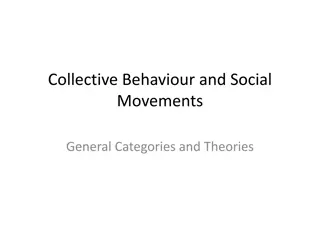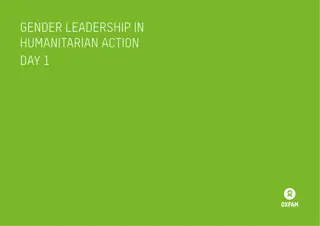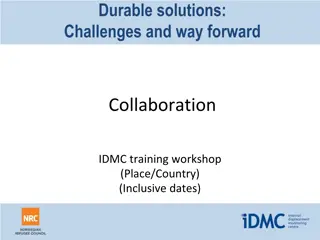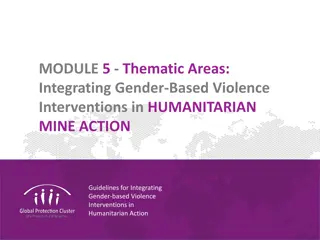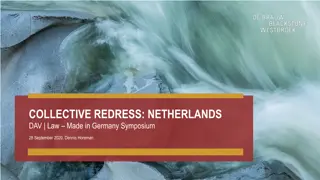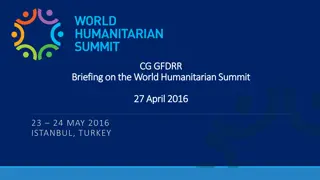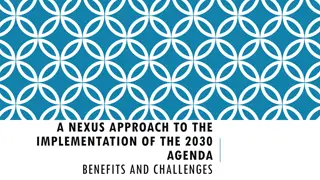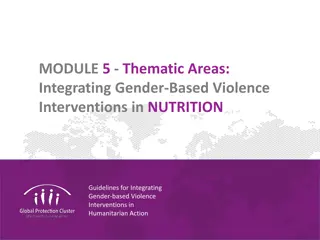Enhancing Collaboration for Collective Outcomes in Humanitarian Development Nexus
Achieving effective outcomes in fragile and crisis-affected environments requires collaboration among Governments, international humanitarian and development actors, based on complementarity and achieving sustainable collective outcomes. Key criteria include joint planning and analysis, progressively ending needs, government/local leadership, and protracted response for long-term solutions.
Download Presentation

Please find below an Image/Link to download the presentation.
The content on the website is provided AS IS for your information and personal use only. It may not be sold, licensed, or shared on other websites without obtaining consent from the author.If you encounter any issues during the download, it is possible that the publisher has removed the file from their server.
You are allowed to download the files provided on this website for personal or commercial use, subject to the condition that they are used lawfully. All files are the property of their respective owners.
The content on the website is provided AS IS for your information and personal use only. It may not be sold, licensed, or shared on other websites without obtaining consent from the author.
E N D
Presentation Transcript
IASC HDN TT Criteria of the Humanitarian Development Nexus
5 Criteria of HDN Collective Outcomes Joint Planning and Analysis Progressively Ending Needs Government/Local Leadership Protracted Response
Collective Outcomes Achieving effective outcomes for people, particularly in fragile and crisis-affected environments, requires a different kind of collaboration among Governments, international humanitarian and development actors and other actors: one that is based on complementarity, greater levels of interoperability and achieving sustainable, collective outcomes rather than the coordination of individual projects and activities.
Joint Planning and Analysis All relevant actors from national and local authorities and the humanitarian, development, environmental and peace and security communities need to come together to achieve a common understanding of risks, needs, gaps and existing capacities.
Progressively Ending Needs Success should be defined by the achievement of measurable reductions in people s risk and vulnerability and their ability to become more self-reliant rather than simply attain basic needs for years on end.
Government/Local Leadership As local as possible, as international as necessary . The design of coordination arrangements must begin with the national authority to augment and not replace existing capacity. Where capacity does not exist, or host government is unwilling attention should be given to capacity development with the view of handing over and exiting when possible.
Protracted Response We are increasingly facing a changing operational landscape, due to increase in unrelenting complex crises. These are creating new operational environments that a characterised by unprecedented levels of affected populations trapped or displaced over a long period of time and require long term solutions requiring stronger collaboration between development, humanitarian, peace and security actors is most need.
Method Use five dimensions to assess the existing response protocols on a 5 point scale (+ N/A) with the aim of preliminarily ascertaining to what degree these protocols are adapted to protracted situations that require strong humanitarian, development, peace and security integration.
Current Inter-Agency Emergency Response Protocols A. Empowered Leadership; B. System Wide L3 Activation; C. What Empowered Leadership Looks like In Practice; D. Reference Module for Cluster Coordination; E. Guidance on the Humanitarian Programme Cycle; F. Concept note on the Interagency Rapid Response Mechanism (IARRM); G. The Common Framework for Capacity Development +ERP H. Operational framework for AAP; I. MIRA Guidance
Empowered Leadership Protocols COLLECTIVE OUTCOMES High High/Med Med Low/Med PROTRACTED RESPONSE JOINT ANALYSIS/PLANNING Low NA GOV/LOC OWNERSHIP ENDING NEEDS
System Wide L3 Activation COLLECTIVE OUTCOMES High High/Med Med Low/Med PROTRACTED RESPONSE JOINT ANALYSIS/PLANNING Low NA GOV/LOC OWNERSHIP ENDING NEEDS
Reference Module for Cluster Coordination COLLECTIVE OUTCOMES High High/Med Med Low/Med PROTRACTED RESPONSE JOINT ANALYSIS/PLANNING Low NA GOV/LOC OWNERSHIP ENDING NEEDS
Humanitarian Programme Cycle Reference Module COLLECTIVE OUTCOMES High High/Med Med Low/Med PROTRACTED RESPONSE JOINT ANALYSIS/PLANNING Low NA GOV/LOC OWNERSHIP ENDING NEEDS
Inter Agency Rapid Response Mechanism (IARRM) Concept Note COLLECTIVE OUTCOMES High High/Med Med Low/Med PROTRACTED RESPONSE JOINT ANALYSIS/PLANNING Low NA GOV/LOC OWNERSHIP ENDING NEEDS
